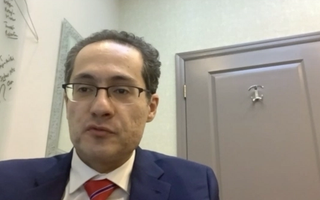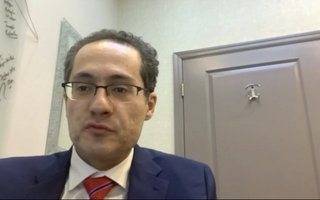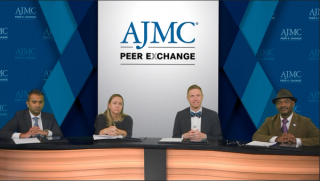
Multiple Myeloma
Latest News

Latest Videos

CME Content
More News

In this case report, a 50-year-old female patient, with a family history of lung cancer, received a diagnosis of multiple myeloma (MM) following presentation with an apical lung mass.

Previous studies have produced heterogeneous results on next-generation flow (NGF)-based minimal residual disease (MRD) detection, despite improvements to the method’s reproducibility and sensitivity, prompting the present authors to investigate its clinical utility.
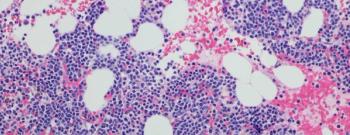
Authors explained how multiple myeloma emerges from earlier clinical phases and the tumor’s microenvironment in the early course of the disease plays a critical role in the survival of myeloma cells.

A study in Blood Advances highlights the toll that a terminal diagnosis can have on everyone around a patient.

Results looking at acceptance of minimal residual disease (MRD) status found that 60% of participants “would change at least one decision based on an MRD result,” and 54% would use both MRD status and disease risk to make decisions.
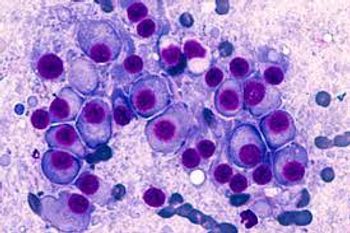
Results from a registry study of patients from Australia and New Zealand show that 9.1% of patients with a new diagnosis of multiple myeloma die within a year of diagnosis, and infection contributed to early death in 38% of cases in which a cause of death was reported.

Financial difficulty during treatment for multiple myeloma (MM) or chronic lymphocytic leukemia (CLL) was associated with lower levels of education, incomes below $60,000, and multiple comorbidities.

Real-world patients often differ from those eligible for clinical trials, and comparing results in both populations is a key step in fine-tuning treatment strategies for multiple myeloma.

Whole-exome and RNA sequencing of early and late multiple myeloma tumor samples aimed to provide insight into disease drivers and phenotypes.
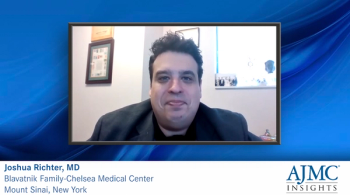
Drs Richter and Kaufman conclude by discussing future promising developments in RRMM therapy.

Professional experts offer suggestions on how payers can be further educated on RRMM treatment.

Drs Joshua Richter and Jonathan L. Kaufman consider where IMiDs fall in the RRMM treatment landscape in comparison with emerging treatment options, such as bispecific antibodies and CAR T-cell therapy.

Early results of a multicenter phase 2 trial exploring the efficacy of daratumumab, pomalidomide, dexamethasone, and ixazomib treatment suggest the regimen is safe and effective in relapsed or refractory multiple myeloma (MM).

Two practicing physicians discuss clinical pathways and decision-making tactics used at their respective institutions for RRMM management.

Dr Richter explains which patients would benefit the most from using lenalidomide vs pomalidomide, while Dr Kaufman calls attention to clinical trials that support the use of pomalidomide in RRMM therapy.

Patients with multiple myeloma frequently relapse and experience deteriorating quality of life, according to findings from the LocoMMotion study, which also reported that specific patient and disease characteristics are associated with poor efficacy outcomes.

A recent review summarized the current knowledge and treatment paradigm of multiple myeloma, including recent advances and challenges in nanomedicine.

A literature review revealed that supplementation with vitamin D could provide therapeutic benefits for patients with multiple myeloma (MM) who are undergoing chemotherapy. However, more research is needed to confirm findings.

Two experts highlight their preferred treatment options for RRMM based on each line of therapy the patient will need.

Drs Kaufman and Richter outline important considerations physicians should be aware of when selecting IMiD therapy for a patient with RRMM.

Dr Jonathan L. Kaufman discusses the role immunomodulatory drugs (IMiDs) play within triplet regimens for patients with RRMM.

Joshua Richter, MD, and Jonathan L. Kaufman, MD, define and provide a basic understanding of relapsed/refractory multiple myeloma (RRMM).

As more treatments continue to enter the market for multiple myeloma (MM), the cost of associated treatments is expected to continue climbing, with the researchers of the study emphasizing the need for more effective and options to help mitigate costs.
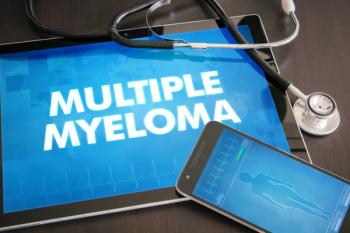
The researchers found that socioeconomic status likely drives survival disparities between Hispanic patients and non-Hispanic whites (NHWs). They also found that, while both underserved populations, Hispanics and non-Hispanic blacks have different survival outcomes compared with NHWs.

Multiple myeloma has historically been considered a chronic disease, even as newer treatments have greatly improved rates of survival for the disease.






